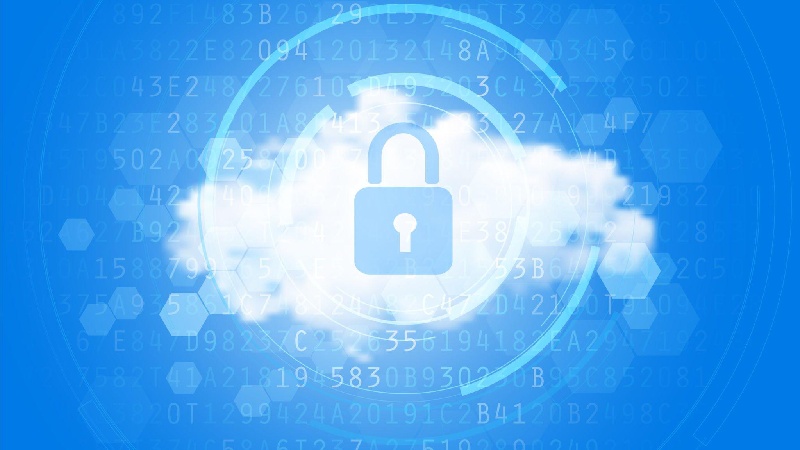Table of Contents
Securing Your Cloud Data
Securing Your Cloud Data Cloud-based storage is convenient for many productions. After all, cloud storage vendors offer unmatched working quickness, speed, effectiveness, flexibility, and productivity in their facilities. But to appreciate these benefits without drawbacks, you always have to save a humble rule of cloud packing safety in mind.
Therefore, choose your cloud wage earner carefully and consider safety according to your industry, company size, actual business needs, and local data discretion laws. These aspects will determine whether your Cloud storing poses additional risks or develops an influential ally for your company and its associates

One of the most dangerous features of cloud safety is to ensure that only authorized employees such as you and your employees have access to the documents and files stored in the Cloud. Ultimately, securing your Cloud lies between you and the cloud storage provider.
However, suppose you do plan to adopt cloud storage for your business. In that case, you must take measures to protect your data through secure passwords, two-factor authentication, and limits and controls on access.
The following article will collect significant cloud safety concerns you have to deal with toward retaining complete control over your digital pickings, whether you choose virtualized cloud storage or storing files in your own old-style data center. Also, we’ll list some best performances to improve cloud data safety.
How Protected is the Cloud for Your Business?
In favor of scalability, elasticity, speed, and cost-saving associated with operating your old-style data Centre it’s tempting to turn a blind eye to the true nature of public clouds. However, all their advantages and great value for money come from the fact: that they are shared and dynamic environments based on virtualization technologies—a significant concern to discuss in connection with cloud data security.
You need to know that your rented storage runs on virtual machines, possibly in a public cloud, and shares the hardware with many other customers. Cloud providers use sophisticated technology to allocate resources when you need them dynamically. The downside of this is that help can come from any location across the globe, and you do not know where your data resides or what other business you share a similar physical attendant with.
While choosing a public cloud worker can be excellent from some aspects, there are specific industries where this setup is improper. Challenging sectors are usually national security interests: healthcare, military, law enforcement, and criminal justice. Fields where meaningful exactly where your sensitive information is stored, and, more importantly, having them encrypted is crucial.
Generally, suppose your company needs to handle personal information (protected by GDPR) or credit card data (protected by SOX), or healthcare information (protected under HIPAA). In that case, you must plan and think about what cloud service you will use and reflect their safety in early payment.
First Things First: What is Cloud Data Safety?

Like other fields of cybersecurity, data safety in the Cloud is a collection of various skills, practices, and policies that protect data from illegal access, attacks, or maintain its integrity. Cloud data security deals specifically with the tests of safekeeping data remote from your data centre or computer. Focus areas protection against malware, DDoS attacks, data breaches, hacking or other threats, preventing data leaks in virtualized environments, disaster recovery, and business continuity. Experts run cloud services at the top of their game because they must comply with demands.
That all sounds good. So, your primary anxiety should be whether your cloud vendor is trustworthy and transparent about their security. Before signing any contract, understanding how cloud providers differ in security practices is crucial.
Why all Businesses Must Take Fog Data Privacy Extremely?
Cloud data discretion should be a core element of your cybersecurity. Regulations and regulars alike hold your business accountable for the private data you handle. How and where you supply it, and your security slow are analysed. While cloud solutions are preferable for some businesses because they seem to be the jackpot solution to comply with strict data policies, the reality is often quite the contrary.
Why? Simply because of the characteristic nature of the public Cloud, its active and flexible approach toward the location of your data. Which can quickly become the source of cloud computing privacy concerns. For example, your files in a community cloud could be anyplace on any server around the globe and are moved constantly between locations where there’s available free space at a given moment. So, your data could be snaking between different continents dependent on free virtual server capacities. This might seem harmless, but it is a desecration of HIPAA and the GDPR. For example, due to recent EU-US confidentiality shield issues, corporations in the EU can no longer store personal info in the US.
The Result of Securing Your Cloud Data which is Removed
In 2020, the EU Court of Fairness (CJEU) acknowledged the EU-US privacy shield was invalid. As a result, personal data cannot be removed from the EU and Switzerland to the US. So any European business that uses Microsoft 365, for example, was forced to react to this new cloud privacy requirement; meanwhile, all their data used within the service can end up on US attendants. But regardless of industry, anyone who rents Structure, Platforms, or Software as part of a simulated cloud facility will be affected by data rules.
The Health Insurance Portability and Responsibility Act of 1996 (HIPAA)also sets out rules that standardize how patients’ personally identifiable information must be secured and maintained in hospitals. In addition, patient data cannot leave the organization without proper security measures for cloud data privacy.
The solution? Corporations could choose cloud service workers who have data centres in a nearby geographic location where they are situated and choose private or virtual private cloud options. But such solutions come with added costs. Another option for smaller companies or individuals is to safeguard their sensitive information with real end-to-end encryption solutions like those created by Trevorite.
Data Integrity in Cloud Computing
While the primary task with cloud data security is, in a nutshell, to safeguard your files from unauthorized access, data integrity in the cloud ensures that your data stays the same and does not get corrupted or altered. No substance how brilliant your services are if you have no means to know whether data has been deleted or changed or are clueless about how alterations took place and by whom, your security, auditability, and credibility are at risk.
This makes data integrity essential, particularly in cloud services, where whole teams have the power to alter files simultaneously, and hackers could change or inject your files with malware during transmission without your or your cloud storage provider’s knowledge. To ensure data honesty in the Cloud, you must have the means to eradicate the most common data truth threats.
These could be accidental loss or alteration during data transfer (client-server authentication, encryption, and decryption), human errors, faulty authorization notions, network malfunction, or data opening from a hacker group.
As an explanation, you should always have your data source validated. Scan if your network or data is corrupt. Where employees or clients can interact with your files, make every kind of alteration noticeable and auditable. Access organization should base on separated roles and the ‘need-to-know,’ ‘need-to-have’ principles. These, alongside continually updated backups, can help you cope with these challenges successfully.
Critical Components to Improving Cloud Data Protection
While all clouds are designed to cover numerous IT needs through virtualization of holding storage, computation power, and work-related collaboration software – they can fundamentally vary in their security levels. In addition, reliability can vary based on how they’re associated with your company’s data centre and the encryption approaches they use during data transfers and at rest.
For improved cloud data defence, you should understand how different cloud groups work, their types of exposures, and how to switch them. Please read our blog on the
types of cloud service wage-earners to study more before inspecting the best performs for securing your data in the Cloud.
How can you do More to Guard Data in the Cloud?
Notwithstanding its difficulty, some critical workings of cloud data safety are worth custody a close eye on. When it comes to geographical reserve. A cloud worker with data centers near you that allows you to choose where your data store explicitly is your safest option. This offers better business continuity, routine, trust and legal safety benefits.
For the same reason, limit, if possible, countries where data regulations are not taken seriously by the government or are known to lack security practices.
Inspect your cloud vendor’s connection type, gateway, and firewall services. You must check for encryption skills for data-at-rest and in-transit as well. Expression for keywords like AES encryption, SSL/TLS grip, strict verification and authorization methods. Separation of roles need-to-know basis and HTTPS. These are basic security measures and, if absent, should draw questions.
Finally, if you want to shield your data, keep in mind end-to-end encryption (E2EE). With E2EE, you don’t have to fear your data. Smooth if a safety breach happens at your cloud provider. In addition, every file you upload will stay scrambled.
The role of cloud-based safety services is to ensure that your information is safe and protected. Vendors restrict unnecessary access by providing encryption, ensuring the security of the data stored in the Cloud, and offering numerous access controls. They also offer data recovery and backup choices in case of any data loss.
In Transit and at Rest Encryption
Data traffic absorbs into the security cloud-first to implement data protection. Where it filters before reaching the application system. Next, cloud storage vendors utilize the TLS protocol to protect your files from eavesdropping during the transfer process. Finally, it uses a cypher, authentication, and critical exchange to save a joining.
Once the data gets out of this secure channel, decrypt. Therefore, when your data arrives at the worker’s server. It accesses by a hacker or a rogue operative. It might be that the worker then re-encrypts your data before storing it on its disks. This call is at-rest encryption. However, the service worker holds the encryption keys to your files. They, or anybody else who manages to access the keys, can decrypt your files.
Client-side encryption
Many encryption algorithms range from the old DES to the fresher AES. These encryption devices utilize complex algorithms to protect and secrete data. Cloud-based vendors use these methods to manage data identity and limit access from an unrecognized application that tries to access these encrypted files.
As you probably guessed, AES is the modern and most protected encryption algorithm. It offers several levels of security depending on the key length, which can be from 128, 192, or 256 bits. 256-bit is the safest in the market, and as far as we know, nobody has managed to crack it.
While most cloud earners only use encryption at rest, it’s only client-side encryption that can guarantee the privacy of your files. In client-side or end-to-end encryption, encryption and decryption occur on the user’s device. Files uploaded to the mist never get decrypted on the worker’s servers as they do not hold the encryption keys. This means that even if rogue workforces or hackers access the earner’s servers, they won’t be able to decrypt your files.
Zero-Knowledge Authentication
Zero-knowledge authentication stops others from reading and viewing your data. Using this type of authentication offers you a critical access password. The worker does not store encryption keys or user passwords in unencrypted or unwashed form. Therefore, it ensures that no one can access your content, not even the provider.
The downside of this approach is that it permanent loss if you lose your password because the service provider can’t reset it. To lessen the risk, you should consider using a password executive. Regardless, don’t forget to generate a strong password that you can remember.
Only a few cloud storage workers in the market, Trevorite, adopt zero-knowledge verification methods as part of their security features.
Two-Factor Verification
Two-factor authentication is an extra layer of safety that prevents troublesome hackers from stealing your identification. When you utilize two-factor verification, the tool will ensure you enter a code after logging in with your password.
There are numerous conducts to get the code. For example, you can get it via email, phone call, or SMS, use a local mobile app, or even a human symbolic. However, this method confuses the hacking process as they need another verification code actually to access your account.
Content Control
Most cloud storage sellers allow you to share your data with others by generating links to folders. Or files or sending a collaboration invitation. With that actuality said, one of the main benefits of using cloud storage is the ability to share while limiting and controlling your shared content.
There are many ways you can adequately control your content. For example, you can implement folder permissions expiry dates, include password-protected links, etc.
Ransomware Protection
Hence, it is best to work with raincloud storing sellers. That offer ransomware protection services or perform well against such spells.
Most cloud packing vendors offer versioning solutions to fight ransomware. However, the application of this answer is different according to each cloud storage vendor. For example, some provide unlimited versioning, while most usually offer 15 or 30 days.
Conclusion
Insufficient guard of your data in the Cloud can cause substantial harm to your business. So if you’re looking to move to the Cloud or already keep your documents there. Think of how you can secure your data by researching and comparing the different security potentials of cloud vendors.
Lastly, here are some near tips to keep in mind when securing your data in the Cloud. First, see that the cloud storage provider has adequate security policies. We can’t emphasize this enough. It would help if you did your research by reading their security policies. Second, browse the user agreement thoroughly to determine how your cloud storage service works. After all, you’ll put your essential data in storage, so you must read the fine print. Finally, if you don’t understand or have questions, don’t be afraid to contact customer service.
Create a solid and secure password that you will remember. Most of the time, loopholes create users themselves. One weak password can wreck your corporation. If you can devise these tips as a part of your cloud protection method and strategy. You are entirely on your way to securing your data in cloud storage. After all, cloud security is not a small matter. It is time to get your cloud safety in order.
Helpful Resources :
What are Smart Thermostats? – Introducing, Lists, Choose, And More
How Tall is 42 Dugg? – Bio, Height and Weight, and More
India’s Gaming Industry – About, Gaming Market, And More
Best Guide On How to Become a Digital Nomad
Marketing Technology – About, Benefits, Advantages, And More

